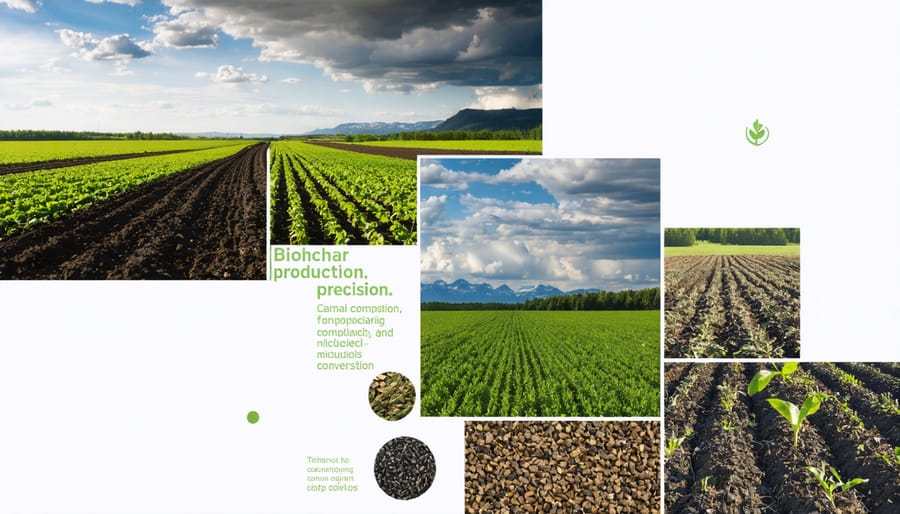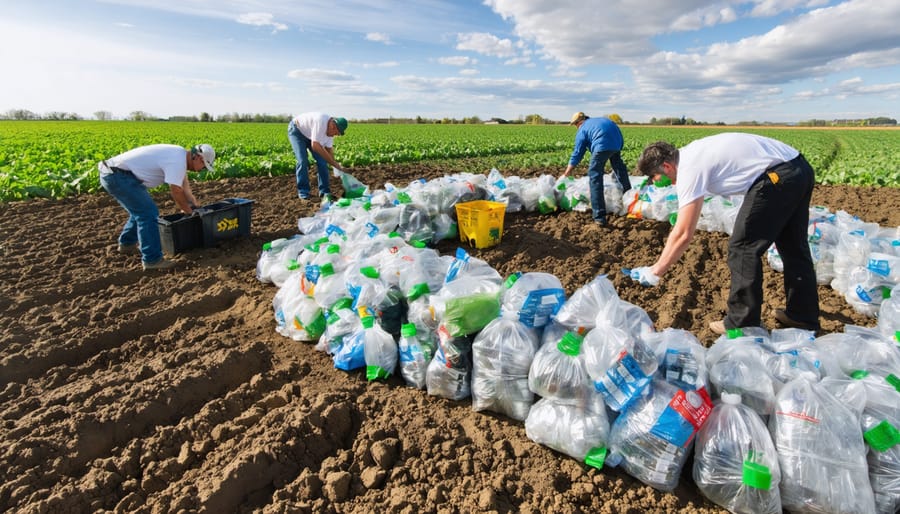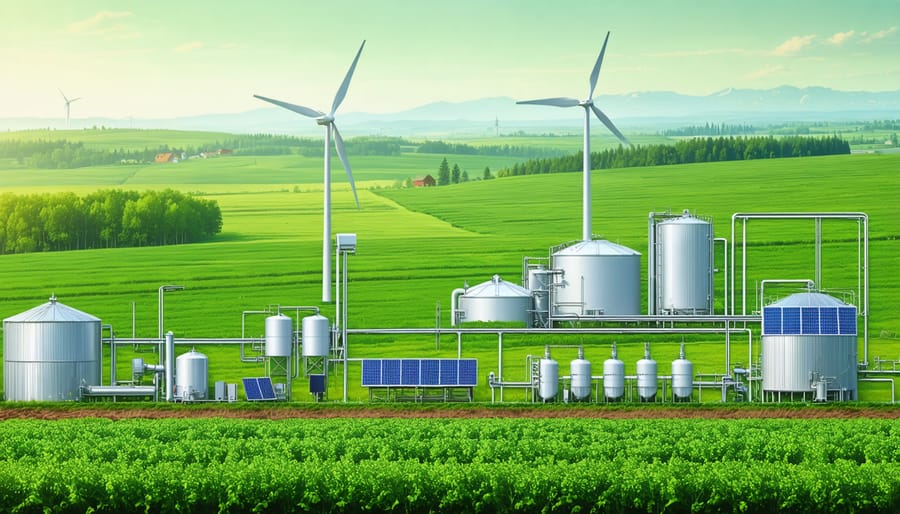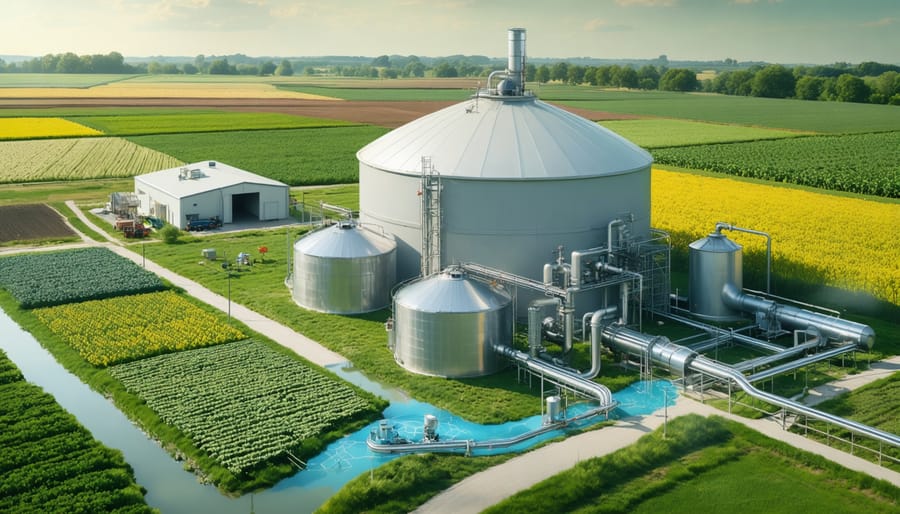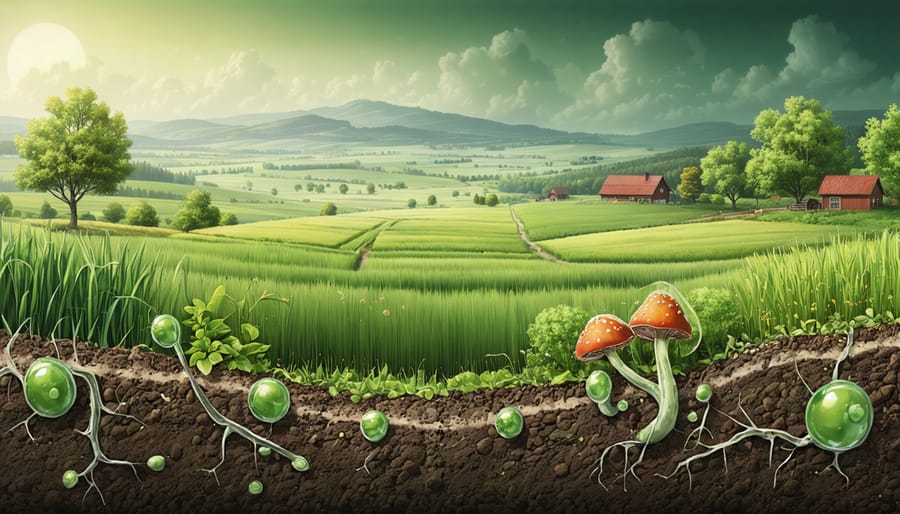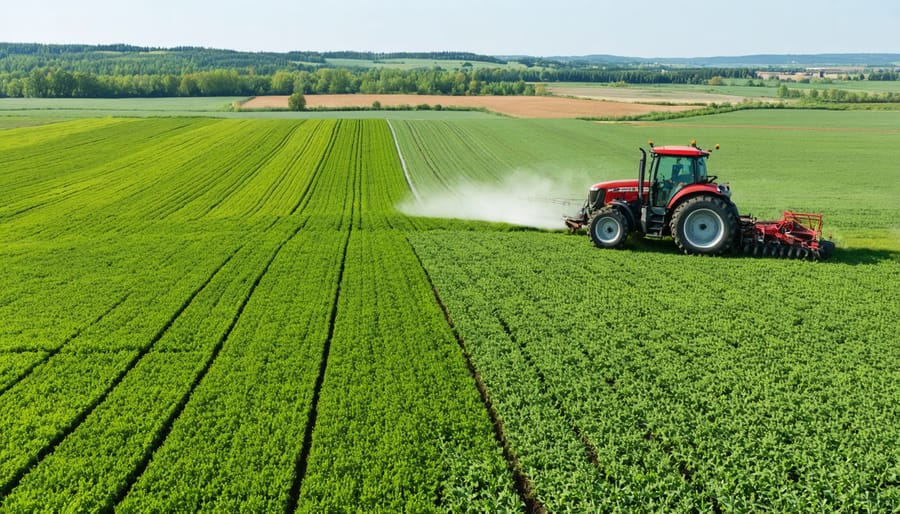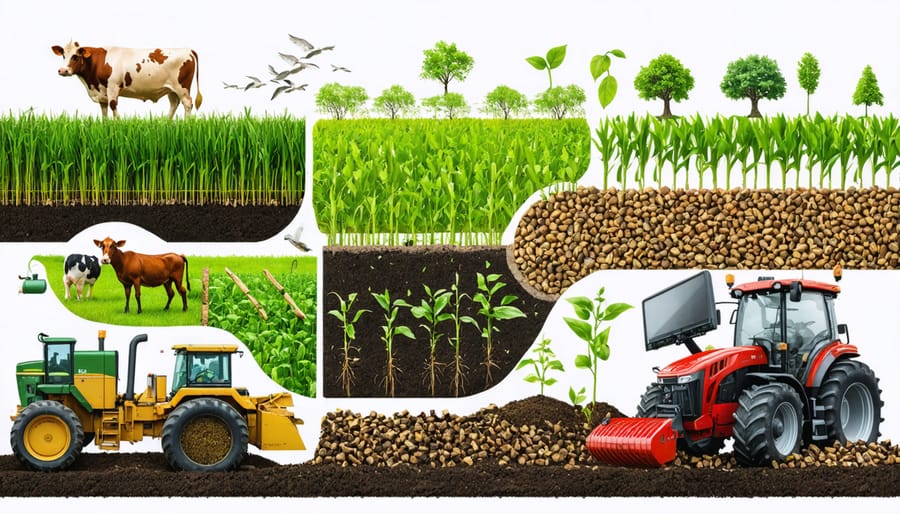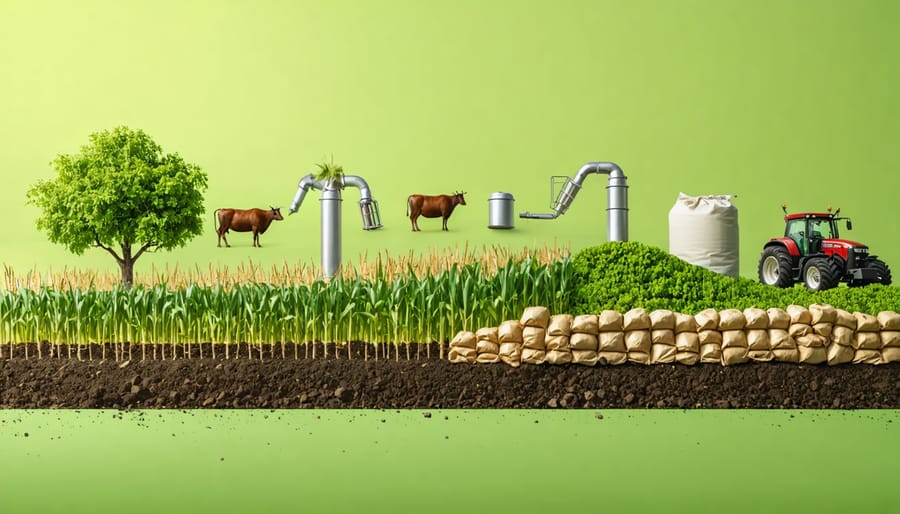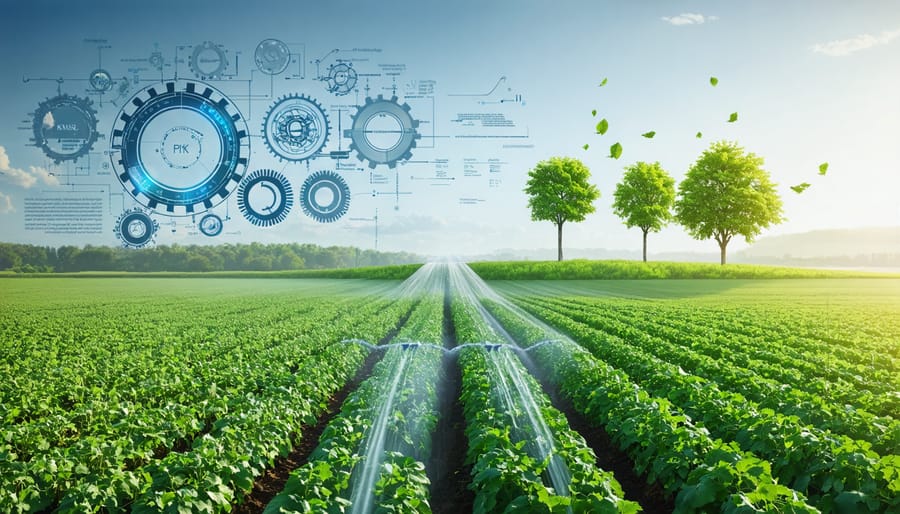In the fertile fields of Alberta, four groundbreaking innovations are transforming how we produce organic fertilizer, marking a pivotal shift in Canadian agriculture’s sustainability journey. From small family farms to large-scale operations, these advancements have slashed production costs by up to 40% while doubling nutrient density in cultivated soils. The integration of biochar production, precision composting systems, specialized microbial formulations, and advanced waste conversion technologies has created a robust framework for domestic fertilizer independence. As global supply chains face increasing pressure, these homegrown solutions offer Alberta farmers a practical pathway to resilience, environmental stewardship, and enhanced profitability. Through collaborative research between the University of Alberta’s Agricultural Sciences Department and local farming communities, these innovations have been rigorously tested and refined for our unique prairie conditions, providing a blueprint for sustainable agriculture across the nation.
Biochar Technology: Alberta’s Game-Changing Soil Amendment

Local Success Story: The Red Deer Biochar Initiative
In 2019, a group of Red Deer farmers partnered with local agricultural scientists to launch what would become one of Alberta’s most successful biochar initiatives. The project, which started with just five farms, now involves over 30 agricultural operations across central Alberta, producing and utilizing biochar to enhance soil quality and reduce carbon emissions.
Led by fourth-generation farmer Sarah McKenzie, the initiative converts agricultural waste from local farms into high-quality biochar using mobile pyrolysis units. These units travel between participating farms, processing approximately 2,000 tonnes of agricultural waste annually. The resulting biochar is enriched with locally sourced organic materials and carefully integrated into existing soil management practices.
The results have been remarkable. Participating farms have reported a 25% increase in soil water retention and a 30% reduction in synthetic fertilizer use. Crop yields have improved by an average of 15% across various soil types, with particularly impressive results in sandy loam soils common to the region.
The initiative has also created six full-time jobs and established a knowledge-sharing network among local farmers. Monthly workshops help newcomers learn proper biochar application techniques, while seasonal field days demonstrate the long-term benefits of biochar implementation. The success has caught the attention of agricultural communities across Canada, with similar programs now emerging in Saskatchewan and Manitoba.
Environmental and Economic Benefits
The economic impact of these four innovations has been transformative for Canadian agriculture, particularly in Alberta where farmers are reporting significant cost reductions in their operations. By building healthier soil, these sustainable practices have led to decreased dependency on synthetic fertilizers, resulting in average savings of $150-200 per hectare annually.
Environmental benefits have been equally impressive. Recent studies from the University of Alberta show that farms implementing these innovations have reduced their carbon footprint by up to 30% compared to conventional methods. Biochar application alone has demonstrated the potential to sequester 2.2-4.4 tonnes of CO2 equivalent per hectare annually, while advanced composting systems help divert organic waste from landfills.
The microbial solutions and waste conversion technologies have created additional revenue streams for many operations. For instance, the Thompson Family Farm in Red Deer reported a 25% increase in soil organic matter within three years, leading to improved water retention and reduced irrigation costs. This translated to water savings of approximately 40,000 litres per hectare during the growing season.
Moreover, these innovations have strengthened local agricultural communities by creating opportunities for resource sharing and collaborative composting initiatives. The resulting soil improvements have enhanced crop resilience to weather extremes, providing long-term economic security for farming operations.
Advanced Composting Systems
Temperature-Controlled Fermentation
Modern advanced composting techniques have revolutionized how Canadian farmers manage organic waste through automated temperature-controlled systems. These innovative setups maintain optimal conditions for decomposition, typically between 55-65°C, ensuring consistent, high-quality compost production year-round, even during Alberta’s harsh winters.
At the Leduc Research Station, farmers have reported a 40% increase in compost quality since implementing automated monitoring systems. These systems use sensors to track temperature, moisture, and oxygen levels, automatically adjusting conditions through ventilation and moisture control. When temperatures rise above 65°C, automated turning mechanisms activate to prevent beneficial microorganism die-off.
The technology has proven particularly valuable for mixed-farming operations, where maintaining consistent compost quality is crucial for soil health. Local farmer Sarah Thompson from Red Deer County shares, “The automated system has transformed our composting operation. We’re now producing premium-grade compost in just 8-10 weeks, compared to 6 months with traditional methods.”
The controlled environment also significantly reduces nutrient loss and greenhouse gas emissions, making it an environmentally responsible choice for sustainable agriculture.
Smart Monitoring Solutions
Modern digital monitoring tools have revolutionized how Canadian farmers manage their composting operations. These smart solutions combine sensors, data analytics, and mobile applications to provide real-time insights into moisture levels, temperature, and nutrient content throughout the composting process.
Alberta farmers are increasingly adopting probe systems that continuously track oxygen levels and temperature gradients within compost piles. These systems send instant alerts to smartphones when conditions need adjustment, helping farmers maintain optimal decomposition rates even during extreme weather fluctuations.
Many local operations now use automated moisture sensors that work alongside weather monitoring stations to determine ideal watering schedules. This precision approach has helped reduce water usage by up to 30% while improving compost quality. Some systems even integrate artificial intelligence to predict turning schedules and estimate completion times based on historical data and current conditions.
The Prairie Agricultural Machinery Institute in Humboldt has been testing these monitoring solutions with promising results. Their studies show that farms using smart monitoring systems produce more consistent compost and reduce labour costs by approximately 25%. Additionally, these tools help farmers maintain detailed records for organic certification and quality assurance programs, streamlining the documentation process while ensuring compliance with agricultural standards.

Microbial Biofertilizer Development
Prairie-Specific Bacterial Strains
In the heart of the Canadian Prairies, researchers have made remarkable strides in developing beneficial microbial solutions specifically adapted to our unique soil conditions. The University of Alberta’s Agricultural Research Station has identified several bacterial strains that thrive in our cold climate and alkaline soils, revolutionizing how Prairie farmers approach soil health.
These locally-adapted bacteria, including specialized strains of Rhizobium and Pseudomonas, have demonstrated exceptional performance in nitrogen fixation and phosphorus solubilization under Prairie conditions. Field trials across Southern Alberta have shown yield increases of 15-20% in wheat crops when these region-specific strains are applied.
What makes these bacterial innovations particularly valuable is their resilience to Prairie frost cycles and ability to remain active at soil temperatures as low as 4°C. Local farmer Dave Thompson from Coaldale reports, “These new bacterial strains stay active weeks longer than traditional varieties, giving us a longer window for nutrient uptake.”
The bacteria are now being produced at scale in Edmonton’s new Biological Solutions Centre, making them readily available to farmers across the Prairie provinces. This local production ensures farmers receive fresh, viable cultures optimized for their specific growing conditions.
Application Techniques
For optimal results with microbial fertilizers, timing and application methods are crucial. In Alberta’s climate, spring application when soil temperatures reach 10°C provides the best environment for beneficial microorganisms to thrive. Apply these fertilizers in the early morning or late evening to protect sensitive microbes from harsh sunlight.
For field crops, use a standard liquid sprayer system, maintaining pressure below 300 kPa to prevent damage to living organisms. Ensure even distribution by calibrating your equipment properly and using 200-300 litres of water per hectare. When applying dry formulations, incorporate them into the top 5-10 cm of soil using light tillage within 24 hours.
Many Alberta farmers have found success with split applications, applying 50% at planting and the remainder during peak growth periods. For best results, maintain soil moisture at 50-60% field capacity and avoid applying microbial fertilizers alongside chemical pesticides, as these can reduce effectiveness.
Store products in a cool, dark place between 5-20°C, and check expiration dates carefully – most microbial fertilizers remain viable for 6-12 months when properly stored. Consider conducting simple soil tests before and after application to monitor effectiveness and adjust your program accordingly.
Remember, patience is key – visible results typically appear within 2-4 weeks of application, depending on environmental conditions and crop type.
Waste-to-Resource Innovation

Livestock Manure Processing
Modern livestock manure processing has revolutionized how Canadian farmers approach waste management, leading to more sustainable and profitable farming operations. By converting agricultural waste into value, farmers across Alberta are transforming traditional challenges into opportunities.
Advanced processing systems now separate solid and liquid components, making storage and application more efficient. Anaerobic digesters, increasingly common on larger Alberta farms, break down manure to produce biogas for energy and nutrient-rich fertilizer. These systems typically reduce greenhouse gas emissions by up to 50% while providing a renewable energy source for farm operations.
Temperature-controlled composting facilities have emerged as game-changers, allowing year-round processing even during harsh Canadian winters. These facilities use automated turning systems and moisture monitoring to create consistent, high-quality organic fertilizer in 8-12 weeks, compared to traditional methods that could take 6-8 months.
Innovative filtration technologies now capture valuable nutrients like nitrogen and phosphorus, which can be concentrated and sold as premium fertilizer products. For example, the Lethbridge Research Centre has demonstrated that processed manure products can match or exceed the effectiveness of synthetic fertilizers while improving soil health.
Many Alberta farmers have adopted two-stage treatment systems that first separate solids for composting, then treat liquid portions through advanced filtration. This approach maximizes nutrient recovery while minimizing environmental impact, creating multiple revenue streams from what was once considered waste. The processed materials meet strict Canadian organic farming standards and help reduce dependence on chemical fertilizers.
Crop Residue Utilization
The transformation of crop residue into valuable fertilizer marked a significant turning point in Canadian agriculture, particularly in Alberta’s farming communities. Rather than burning or discarding crop waste, farmers began implementing innovative methods to convert these materials into nutrient-rich soil amendments.
Leading this change was the adoption of advanced composting techniques specifically designed for prairie conditions. Alberta farmers discovered that mixing crop residue with livestock manure in carefully managed ratios created an ideal environment for decomposition, even during colder months. This practice not only reduced waste but also produced high-quality organic matter that improved soil structure and water retention.
Local success stories, like the Morrison family farm near Red Deer, demonstrate the practical benefits of residue utilization. By implementing a three-bin composting system, they converted over 2,000 tonnes of crop waste into fertilizer annually, saving approximately $45,000 in synthetic fertilizer costs while improving soil health.
The introduction of mechanical choppers and specialized incorporation equipment made residue management more efficient. These tools helped break down tough plant materials like wheat straw and corn stalks into smaller pieces that decomposed more quickly. Many Alberta farmers found that this approach reduced their tillage needs while building organic matter in their soils.
Research from Agriculture and Agri-Food Canada’s Lethbridge Research Centre showed that farms using crop residue management systems experienced a 15% increase in soil organic matter over five years. This improvement led to better drought resistance and reduced erosion, particularly beneficial for prairie farming conditions.
Today, crop residue utilization continues to evolve with new technologies and techniques, making it an essential part of sustainable farming practices across Canada.
The Green Revolution’s four key innovations have fundamentally transformed Canadian agriculture, particularly in Alberta, creating a more sustainable and productive farming landscape. These advancements in biochar production, advanced composting techniques, microbial solutions, and waste conversion systems have provided farmers with practical tools to enhance soil health while reducing environmental impact.
Looking ahead, these innovations continue to evolve, with Canadian research institutions and agricultural organizations leading the way in developing even more efficient and cost-effective solutions. Alberta farmers are increasingly adopting these technologies, reporting improved crop yields and reduced input costs. The integration of these methods has not only benefited individual farm operations but has also strengthened our agricultural communities through knowledge sharing and collaborative initiatives.
As we face growing challenges from climate change and the need for increased food production, these innovations offer promising solutions. Many Alberta farmers are already combining multiple approaches, such as using biochar-enriched compost and implementing microbial solutions alongside waste conversion systems. This integrated approach is becoming a model for sustainable agriculture across Canada.
The future outlook is optimistic, with new developments in these technologies emerging regularly. By continuing to embrace and adapt these innovations, Canadian farmers are well-positioned to maintain their role as leaders in sustainable agriculture while building resilient, productive farming operations for future generations.

